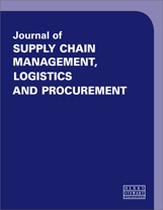Achieving rapid value and ROI from supply chain visibility while building long-term capabilities
Abstract
With the recent rapid advances in digital supply chain technologies, companies are investing significant capital in these solutions. So far, however, the results and benefits are falling short of expectations. The current authors have discovered through multiple post-implementation assessments and a detailed survey of senior operations leaders that only 20 per cent of digital supply chain investments return the expected result. By looking deeper into the root causes of these value traps, this paper describes how the authors uncovered ways to improve the probability of successful digital transformation. The paper also examines which technologies are being implemented by companies and discuss how those technologies can help improve supply chain management. In our experience, companies can enhance returns on supply chain investments by adhering to four crucial mantras as part of their digital transformations: 1) quantify the benefit opportunity; 2) build a sustainable digital-focused operating model; 3) align across the enterprise and partners; and 4) prepare the organisation for the needed change. The paper also provides examples of how PwC uses these steps to help increase probability of success and return on investment.
The full article is available to subscribers to the journal.
Author's Biography
Nick Bonny has more than 20 years’ experience in the pharmaceutical, biotechnology and medical device industries, primarily in the areas of manufacturing operations, supply chain management, distribution, product commercialisation, deals and network strategy. Prior to joining PwC, Nick worked at Wyeth Pharmaceuticals (now Pfizer) and Genentech (now Roche) where he worked on supply chain strategy, capital project management and lean manufacturing/Six Sigma initiatives. At PwC, Nick has helped clients develop and implement transformational operations and organisational strategies to enable growth and enhance operating margins.
Rafael Lander is a Partner in the Life Sciences Group at PwC and has more than 20 years’ experience in the medical device, drug/device combination and pharmaceutical industry, focusing on operations strategy, manufacturing, supply chain and strategic sourcing. Prior to joining PwC, Rafael held several operations and supply chain positions with Johnson & Johnson, where he focused on the launch and subsequent cost reduction and process improvement programmes related to the first drug-eluting stent. Rafael earned an MBA from the Stephen M. Ross School of Business at the University of Michigan and a BSc in industrial engineering from the University of Miami. He is also a Six Sigma Green Belt and Certified in Production and Inventory Management (CPIM) by APICS.
Citation
Bonny, Nick and Lander, Rafael (2023, December 1). Achieving rapid value and ROI from supply chain visibility while building long-term capabilities. In the Journal of Supply Chain Management, Logistics and Procurement, Volume 6, Issue 2. https://doi.org/10.69554/VTUW3748.Publications LLP
